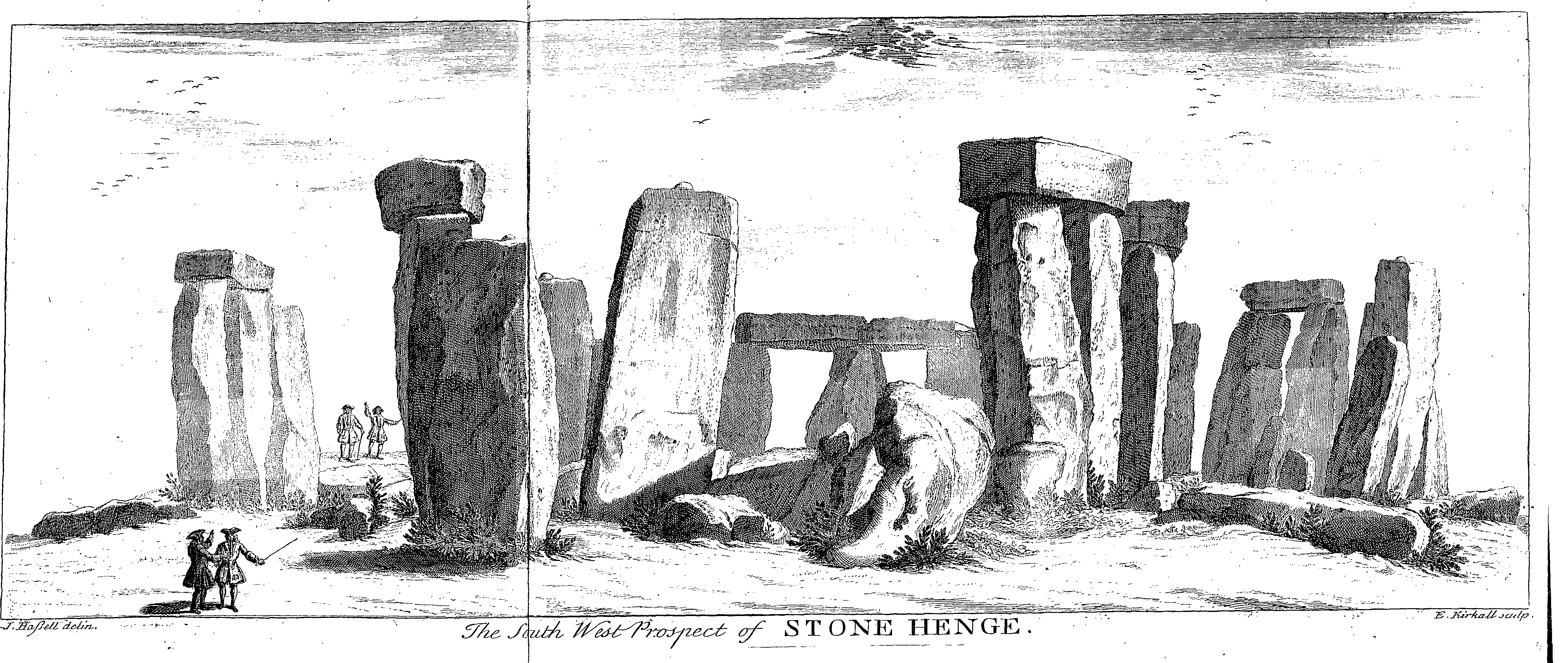On 31st October 1918, Stonehenge was gifted to the nation by local landowner Cecil Chubb. As has been widely reported in the media, English Heritage are running a series of projects and events to celebrate the centenary, including the fascinating recreation of photographs taken by visitors to the stones during the ‘50s, ‘60s and ‘70s in their ‘Then and Now’ Project.
I decided to research Stonehenge in Gale Primary Sources to see if I could uncover any more about Cecil Chubb’s bequest, how Stonehenge came into his possession in the first place, and the nations response to such a generous gift.
Monday 16th August 1915: Stonehenge for Sale!
On the ‘English Page’ of the New York Herald, Paris (the predecessor to the International Herald Tribune) – amidst war reports, casualty lists, the English weather report and news about King George, Queen Mary and Princess Mary taking afternoon tea at the Fishing temple – there is a column with the headline: ‘Sale of Stonehenge Will Be Event of Next Month’

The auction is also mentioned in the Dundee Courier, though the author is perhaps more focused on an emotional lament that the sale will cause the ‘sacrosanct’ Stonehenge to fall than on accurate reporting; not only do they put the size of the estate at 64,222 acres, rather than the actual 6,421, this piece is also printed on 23d September 1915 – 2 days after the estate had already been sold.
‘Now, empty, mysterious in its monstrous erection, puzzling the learned, and exciting the wonder of the ignorant, it is to be disposed of by a little wooden hammer. There will be a high desk, no doubt, nodding bidders, the silence of the auction-room expectations, a peering round for a glimpse of the buyer, a half-audible tap, and the great open air temple will have fallen.’

A report of the auction in the Western Gazette (found in Gale’s British Library Newspapers archive) provides more context to the auction proceedings, and why Stonehenge had come on to the market. The estate had most recently been owned by Sir Edmund Antrobus, who used to charge people 1 shilling to visit the stones and oversaw Stonehenge becoming protected under the Ancient Monuments Act in 1913.[1] Sir Edmund Antrobus had died just three months after his son had been ‘killed in action in Flanders,’ and his brother, Sir Cosmo Antrobus, was consequently offering Amesbury Estate to market.
Sir Howard Frank, the auctioneer presiding over the sale said ‘it must be a matter of regret to everyone in the neighbourhood that the Amesbury Estate, which had been in the hands of one family for so many years, had to be sold and possibly cut up.’ It was his wish that someone would be able to buy the land and estate in its entirety, but this was not to be. ‘There was no bidding for the estate as a single lot and the auctioneer proceeded to offer it in lots.’ Stonehenge was Lot 15.
A hush descended on the room as the bidding started and Sir Howard Frank asked ‘Does anyone in the room wish to own Stonehenge? Surely someone will give me £5,000.’ Having reached £6,000 he asks again ‘It is impossible to value Stonehenge…but surely £6,000 is a poor bid.’ The hammer nearly dropped, but then subsequent bidding, raised by £100 increments, saw the final bid of £6,600 made by Mr. C. H. E. Chubb of Bemerton Lodge, apparently acting on behalf of his wife.
What I find particularly fascinating is that after the sale of Stonehenge, a world-famous monument, a more common property auction ensued, in which one buyer bought 2 farms for £18,400 – clearly seen by the purchaser, Mr A. C. Young, as a more valuable investment.

So why, only 3 years later do Mr and Mrs Chubb bequeath Stonehenge to the British Government?

In the correspondence between Mr. Chubb and Sir Alfred Mond published in the same edition of The Times as the source above, Chubb explains his decision to offer Stonehenge to the nation:
‘I became the owner of it with a deep sense of pleasure, and had contemplated that is might remain a cherished possession of my family for long years to come. It has, however, been pressed upon me that the nation would like to have it for its own and would prize it most highly. I have therefore decided to give up this unique possession…’
We can conclude from this letter that he may well have been under a certain amount of pressure from an unknown source, but we are not sure what or whom this source was. Mr Chubb and his wife also requested that income made from Stonehenge for the remainder of the war was given to the Red Cross Society ‘whose work at the present time is of such great national value’. In his response, Sir Alfred Mond accepts on behalf of the Government and the nation Chubb’s ‘patriotic and public-spirited gift.’
Blog post cover image citation: Jones, Inigo. The most notable antiquity of Great Britain, Vulgarly called Stone-Heng, on Salisbury Plain, restored, By Inigo Jones, Esq; Architect General to the King. … and a compleat Index to the entire Collection. 2nd ed., printed [by James Bettenham?] for D. Browne junior, at the Black-Swan without Temple-Bar, and J. Woodman and D. Lyon, in Russel-Street, Covent-Garden, M.DCC.XXV. [1725]. Eighteenth Century Collections Online, http://tinyurl.galegroup.com/tinyurl/7BWrS6.
[1] https://www.british-history.ac.uk/vch/wilts/vol15/pp13-55#anchorn64

